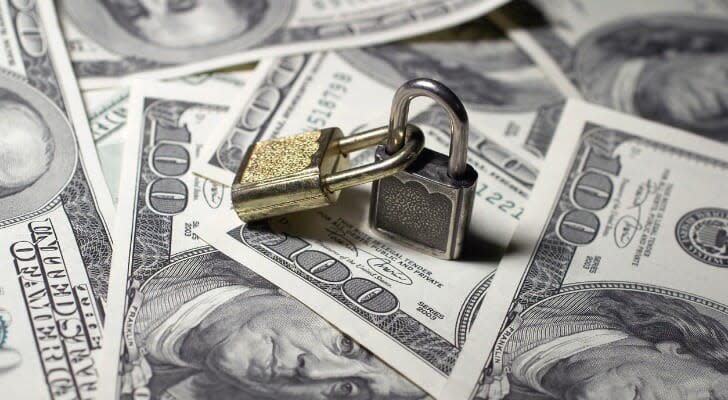PPP Calculator: How Much Can Your Business Get?

The COVID-19 pandemic has caused serious problems for the economy, and small businesses in particular are taking it on the chin. The federal government, though, is offering coronavirus crisis relief to the tune of $349 billion through the newly created Paycheck Protection Program (PPP), which can offer forgivable loans to qualifying businesses. If you’re a small business owner trying to make payroll, our calculator can show you what you can get through the program.
Calculate Your PPP Loan Amount
The maximum amount of money you can borrow from the PPP is equal to 2.5 times your average monthly payroll costs or $10 million, whichever is lower. You should exclude from your calculation of payroll costs any compensation in excess of $100,000 per employee. But you can include payment for vacation, parental, family, medical and sick leave (that is not covered by another emergency loan/grant); payment for dismissal or separation; payment for group health care coverage, including insurance premiums; payment for retirement benefits and payment of state and local taxes assessed on employees’ compensation.
Also, you can add to your total loan amount the outstanding amount of any Economic Injury Disaster Loan (EIDL) made between January 31, 2020 and April 3, 2020, less any “advance” that is forgivable under an EIDL COVID-19 loan.
The calculator below will tell you how much you’ll be able to borrow through the PPP.
About the PPP Loan Program
The recently passed Coronavirus Aid, Relief, and Economic Security (CARES) Act contains numerous programs designed to help small businesses. The most prominent of these is the PPP, which the SBA classifies as a 7(a) loan. It is designed to help small businesses impacted by the crisis make sure they are able to continue to meet their payroll obligations without having to cut salaries or lay any workers off. It also allows small businesses to rehire already laid-off workers and restore any salaries that had been cut.
The main appeal of PPP loans is that a large percentage of each loan can turn into a grant if certain headcount and payroll criteria are met. Small business owners may receive only one PPP loan, though they can also apply for an Economic Injury Disaster loan as long as the two loans are to cover different costs.
As of April 8, 2020, the Small Business Administration (SBA) reported that it has recorded more than 220,000 PPP loans amounting to about $66 billion. Demand is so high, in fact, that the Treasury Department has requested an additional $250 billion in funding. Hopefully, Congress will approve it soon.
Who Qualifies for a PPP Loan?
Small business with 500 or fewer employees may be eligible. Small businesses, sole proprietors, S corporations, C corporations, LLCs, independent contractors, self-employed people and private nonprofits can all qualify. What’s more, tribal groups and veteran groups are also eligible.
Restaurants and hospitality businesses also make the cut if they have 500 or fewer employees per location. Details on the size standards and exceptions are on the SBA website.
Owners more than 60 days delinquent on child support obligations, farms and ranches, sex businesses, lobbyists, gambling establishments and businesses involved in illegal activities don’t qualify.
Terms of PPP Loans
Loans offered by the PPP are 100% forgivable if businesses meet certain criteria. This means that the loan essentially functions as a grant — aka free money — if you meet the conditions laid out in the CARES Act.
Up to eight weeks of payroll, mortgage interest, rent and utilities covered by the PPP loan will be forgiven as loans as the full-time headcount and payroll at a firm stay the same as they were on average between February 15, 2019 and June 30, 2019 (or January 1, 2020 to February 15, 2020 if you launched your business just this year.) Businesses that have already cut salary or laid off employees have until June 30, 2020 to rehire their staff and reinstate salaries to pre-crisis levels.
Any part of the loan that is not forgiven (you’ll have to request forgiveness from the SBA and prove that you used the money to cover payroll, etc.) will be due in two years, with payments deferred for six months. The interest rate is fixed at 1.00%. Remember that if you don’t maintain headcount and payroll at pre-pandemic levels, the amount that is forgiven will be reduced.
You can submit an application for a PPP loan through a local lender. If your bank is no longer accepting applications, check our guide to PPP loan providers and their requirements (we are continually updating it).
Tips for Surviving the Recession
Many financial advisors specialize in working with small business owners. Finding the right financial advisor that fits your needs doesn’t have to be hard. SmartAsset’s free tool matches you with financial advisors in your area in 5 minutes. If you’re ready to be matched with local advisors that will help you achieve your financial goals, get started now.
The government has various other programs too, including other SBA 7(a) loans. Consider all options when you are thinking about how to get help for your small business.
Photo credit: ©iStock/Stork
The post PPP Calculator: How Much Can Your Business Get? appeared first on SmartAsset Blog.
